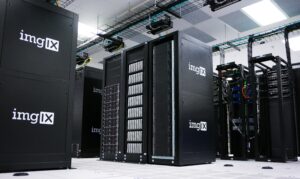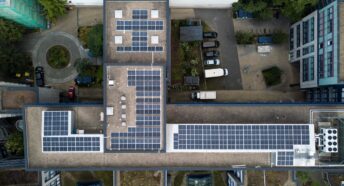The Data Centre Dilemma
“A large data centre, researchers say, can gobble up anywhere between 1 million and 5 million gallons of water a day — as much as a town of 10,000 to 50,000 people.” (Washington Post)
Although necessary for modern life, we discuss the issues with data centres in the UK and where they should be located.
Information and communication technology (ICT) is at the centre of modern life. It makes it possible for us as individuals to pay our bills on the fly, order necessities online, keep in touch with faraway family, stream our favourite shows, and many other things. It also allows companies to optimise energy production and consumption, scientists to predict weather patterns and geophysical events, and medical experts to model risk factors or transmission patterns of diseases. While the benefits to humanity are apparent, and few of us would advocate for stepping back to a time before IT, there are important considerations regarding both how IT is used and how the growth of the sector is managed. One such consideration is the development of the infrastructure underpinning this new online world, data centres. Specialised facilities designed to house and run large amounts of computer servers, data storage devices, and networking equipment. The number and size of data centres has increased enormously over the last few decades and the number is ever growing. There are estimated to be approximately 8,000 data centre locations worldwide. As of January 2022, there were upwards of 2,700 data centres in the United States however despite our small size the United Kingdom, with 456 centres, ranked an impressive third place when it came to which country had the most. In fact Europe’s largest data centre base is located in Buck’s very own Slough Estate, which currently hosts 34 data centres across a 300,000 sqm floor area. With additional developments in both Iver and Risborough underway the number of centres in Bucks set to rise. Why is this a worry?

Although there have been positive developments to ensure data centres are more energy efficient, they are still consuming enormous amounts of electricity, and water. “A large data centre, researchers say, can gobble up anywhere between 1 million and 5 million gallons of water a day — as much as a town of 10,000 to 50,000 people.” (Washington Post) Water is used primarily to cool processors allowing them to run at the highest efficiency. Due to this high volume demand, there has been a significant proliferation of data centres in the global north; in the Nordic countries and in Alaska, areas with easy access to cold water. Cleverly, the heated water is in some cases used for heating of nearby homes or industries. However even with the new Eco schemes in place, developing land close to lakes, rivers and coastlines, and using vast volumes of their water needs to be carefully considered to avoid negative impacts on ecosystems. Another consideration needs to be in regard to diesel fuelled emergency generators that are tested regularly on data sites throughout the year and therefore could also contribute to air pollution levels.
With these factors to consider it’s not surprising, tension becomes even more pronounced in more densely populated and developed areas, such as here in Buckinghamshire. During our research we found 12 planning applications for data centres between 1 Jan 2023 and today pertaining to 6 different sites. Using local water, all of them are likely to have an impact on nearby rivers and streams. A project known as “Britain’s largest data centre campus” started work again recently at the site of the Molins tobacco factory site in Haw Lane, Princes Risborough. After delays since 2008 the council spokespeople have said the 14-year-old project is finally going ahead. The site plan proposed a car-park for 150 cars as well as the four data centre buildings. Perhaps a future home for one of our hyper scale players, most likely Amazon, Microsoft, Google, or Meta. Another centre application in Iver consists of demolishing the existing buildings at its site on Thorney Mill Road to develop a 55,000 sqm data centre along with offices and an on-site substation. The company aims to develop a single, three-story facility on 10.75 acres. The 60 megawatt facility would offer a total of 16,850 sqm of IT space. As well as these major sites planning permission applications for an additional three in the Chiltern/South Bucks area are awaiting review. 
Buckinghamshire council refused another recent application to develop a data facility on green belt area near Uxbridge Moor. We applaud this decision and hope that future planning applications which put environmental values at risk will be handled as thoughtfully. Here at CPRE we understand a need for an ever changing, ever growing digital world (most of you are now receiving our newsletter via email) but we want to know with our digital future that the environment is still being taken into account. Solar panels are being used where possible and buildings are being located on brownfield sites. Unbelievably, data centres consume around 3% of the global electricity consumption. Data centre workloads continue to grow exponentially, between 2015 and 2021 for example, internet use increased by 440 % and data centre workloads 260 %. However, thanks to improvements in energy efficiency, and economies of scale when moving towards large cloud-based service providers, the energy demands have fortunately not increased to the same degree but a more modest 10-60% during the same time window. This excludes cryptocurrency mining, for which energy consumption grew an astounding 2300-3300%. On the opposite side of the spectrum digital technologies sometimes actually help meet sustainability goals. According to the International Energy Agency “digitisation can help cut costs, improve efficiency and resilience, and reduce emissions” across the energy sector. So despite this positive, according to the International Energy Agency, to meet net zero targets by 2030, emissions from the sector need to be halved. With big changes needing to be made in the industry, how can we help? As private citizens we can keep an eye on our own digital habits. Writing this article has motivated me to de-clutter my email, think twice before I reach for my phone, and admit to myself that maybe I don’t need to save all 500 indistinguishable digital photos of my sleeping cats.






